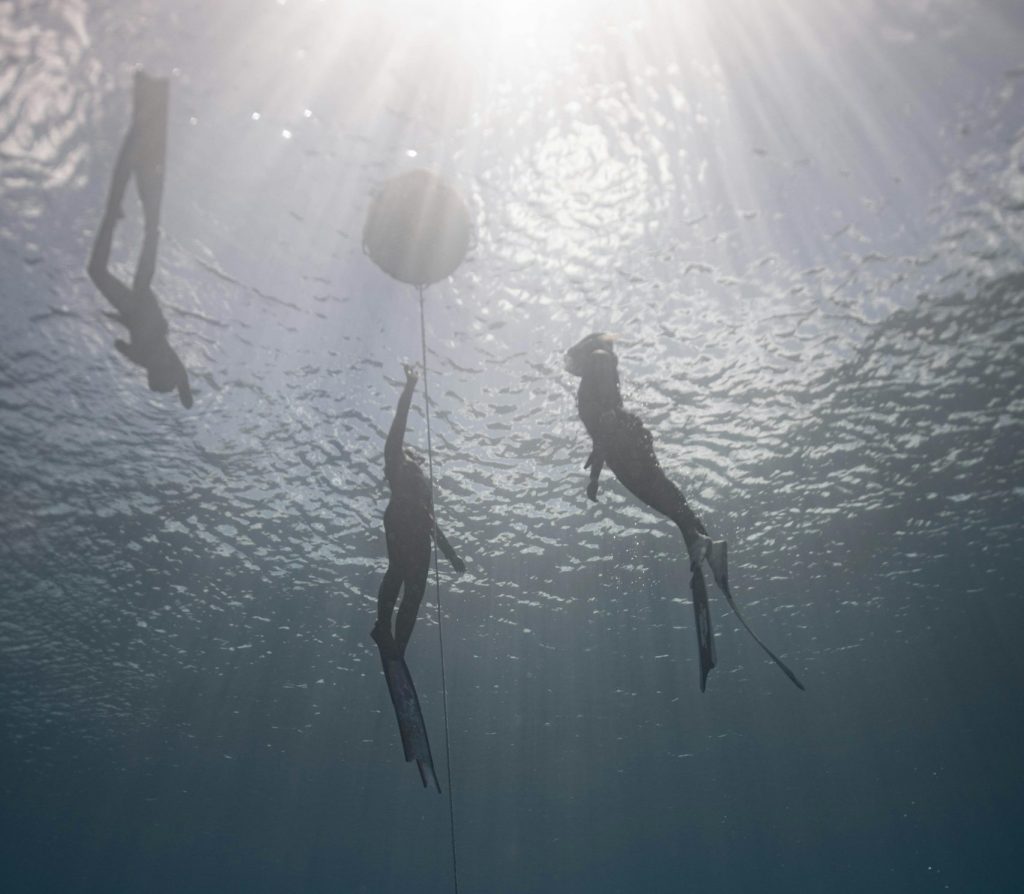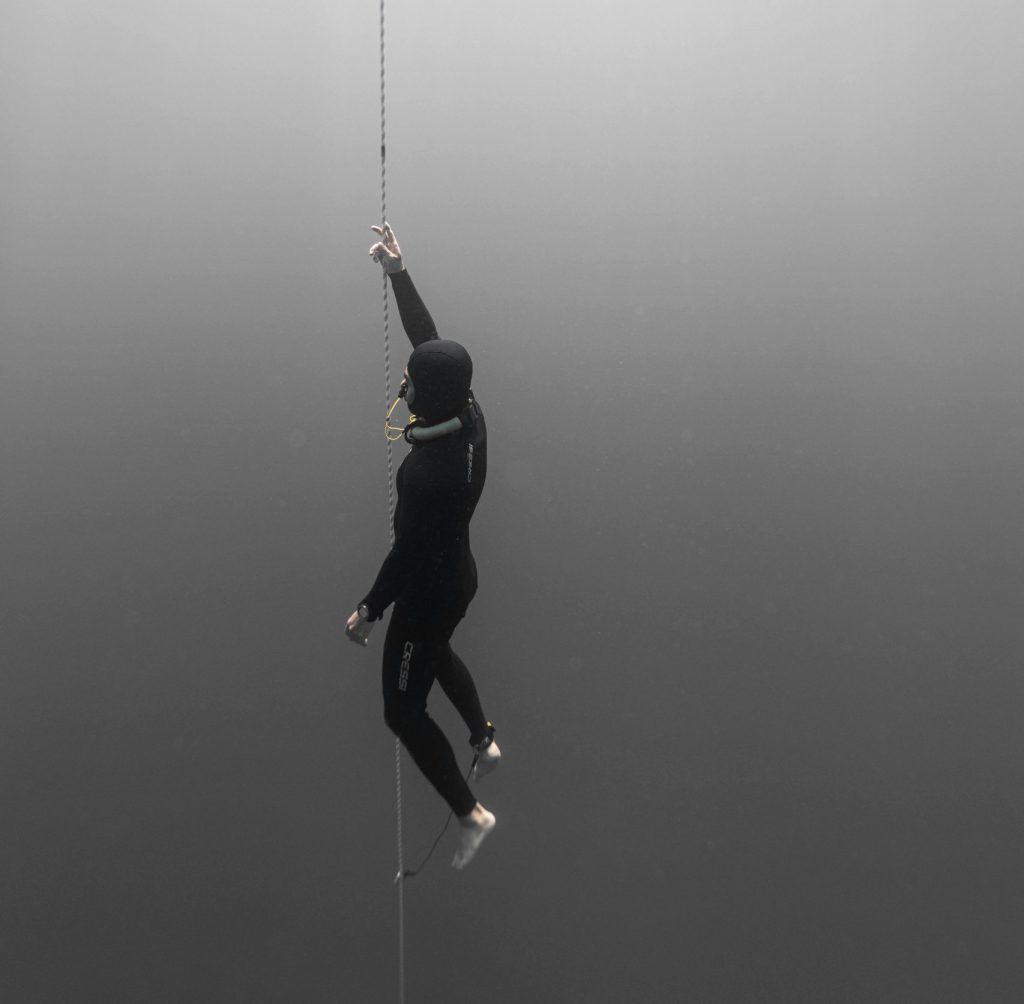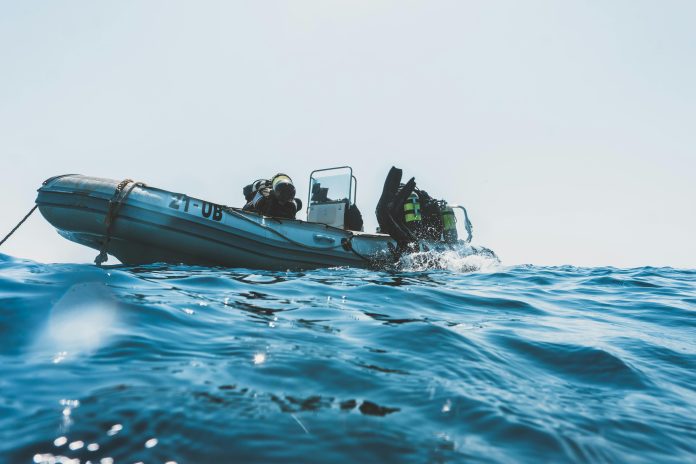Trouble Drill:
Managing Breathing Difficulty and Apprehension Under aquatic
If you experience breathing difficulty, dizziness, or apprehension during a dive, consider the following steps:
Communication: Inform the surface and your buddy or search group (if attached) that you are not feeling well.
Facemask Purge: Purge your facemask for at least two seconds.
Symptom Relief: If your symptoms improve, you can continue with the dive unless the main cylinder pressure drops to 50 bar or less. In that case, notify the surface and your buddy, and ascend at a controlled rate.
Persistent Symptoms: If the symptoms persist, open the switch-block valve, inform the surface and your buddy, and continue a controlled ascent.
Surface Drill: Upon reaching the surface, conduct a surfacing drill

Lost/Failure of Voice Communications
In the event of voice communication failure, follow these steps:
Revert to Lifeline Signals: If voice communications fail, switch to lifeline signals.
Supervisor’s Guidance: Follow the guidance provided by the supervisor’s communications plan.
Flooded Facemask Drill
In the unlikely event that the facemask becomes flooded, follow these steps:
In the unlikely event that the facemask becomes flooded, follow these steps:
Depress the Purge Button: While maintaining pressure on the top of the mask, depress the purge button.
Surface at the Correct Rate of Ascent: If the mask fails to clear, ascend at the appropriate rate, informing both the surface and your buddy.
Breathing Difficulty: If breathing becomes impossible, exhale continuously during the controlled ascent.
Surface Drill: Upon reaching the surface, conduct the Surfacing Drill.
Emergency Ascent Procedure for Divers
Due to inherent risks, the practical emergency ascent procedure should not be taught or practiced by any diver without formal training documentation, medical cover, and access to a compression chamber on-site.
In the event that diving equipment becomes inoperative due to damage or defects, divers must follow these steps for an emergency ascent:

Open the Switch-Block Valve: If faced with equipment failure, open the switch-block valve and ascend to the surface at the correct rate. Communicate your intention to ascend with the diving supervisor and your buddy or search group, as appropriate.
No Air Supply: If opening the switch block valve reveals no available air supply, ascend at the correct rate while managing buoyancy. You may need to release weights gradually, one side at a time, and use dump valves to control the ascent. The Buoyancy Control System Emergency Cylinder (BCS EC) can be used as a last resort to aid ascent, but only in short bursts until positive buoyancy is achieved. Monitor the ascent closely to prevent uncontrolled ascent.
Breathe Normally: Throughout the ascent, maintain normal breathing. If this becomes impossible, exhale continuously until reaching the surface.
Upon reaching the surface, take the following actions:
Slip Remaining Weights: Be aware of any divers immediately below you and slip any remaining weights.
BCS Inflation: Inflate the Buoyancy Control System (BCS) using the emergency cylinder.
Attract Attention: Signal the surface support crew to alert them of your situation.
Facemask Removal: Remove your facemask.
Orientation: Turn onto your back.
Swim to Safety: Swim to the nearest point of safety
Ditching Drill for Divers
The practical Ditching Drill is not routinely exercised under aquatic due to the disadvantages outweighing the advantages. However, divers may practice the drill while standing in the water, but they must never leave the surface. Under aquatic practical ditching drills are neither taught to nor exercised by any diver.
In extreme circumstances, when no other alternative is available, divers may need to ditch their diving set. If such a situation arises, follow this drill:
Communication: If possible, communicate your intention to ditch the set with the supervisor and your buddy or search group, as appropriate.
Disconnect Suit Inflation Hose: Release the direct feed suit inflation hose.
Release Straps: Free the chest and waist straps.
Shoulder Buckle Release: If a buddy-line is worn, release the shoulder buckle on the same side and slip that arm out of the equipment.
Check for Hazards: Sweep a hand across your body to ensure no snagging hazards exist. Check for foul lines, buddy-lines, direct feed, and knives.
Facemask Adjustment: Loosen the facemask straps and push the facemask and intermediate hose clear.
Controlled Ascent: Ascend to the surface at a controlled rate, exhaling continually
Companion Diver Drill
This drill outlines the necessary steps to be carried out in emergency situations involving a distressed diver:
Communication and Assessment: Communicate with the diving supervisor and attempt to raise the diver via voice communications (if available).
Approach the diver, firmly assess their level of consciousness, and check gauges if possible. If there is no response, determine whether the switch block valve is open or closed.
Switch Block Valve and Controlled Ascent: Open the switch block valve Ensure all lines are clear and surface the diver at a controlled rate of ascent. Use the Buoyancy Control System (BCS) controls to adjust buoyancy as needed. If the main cylinder is empty, the AP200 will not deliver air. Ditch weights (one side at a time) if the BCS does not provide sufficient lift.
BCS Emergency Cylinder (BCS EC): The BCS EC should only be used as a last resort and limited to short bursts until positive buoyancy is achieved. The diver must locate and retain a dump valve in hand during BCS EC use. Monitor the ascent closely to prevent uncontrolled buoyancy changes.

Surface Procedures: Upon reaching the surface:
Slip any remaining weights from the distressed diver’s set.
Fully inflate the BCS
If possible, fully inflate the diver’s suit and kick up their legs to achieve a horizontal attitude.
Do not slip your own weights; fully inflate your own BCS and suit for positive buoyancy.
Attract the attention of the surface safety team.
Breathing Diver: If the diver is breathing, both divers should remain on air and swim to the nearest point of safety.
No Air Supply: If there is no air supply and sea conditions allow:
Remove the distressed diver’s face mask to enable them to breathe fresh air. Maintain the diver’s airway open and protect it from water ingress.
Buddy Line: If worn, the buddy line should not be disconnected.
Standby Diver Drill
This drill outlines the steps to be conducted by the standby diver:
Approach the Diver: Follow the diver’s light-line if possible. Assess the situation and prepare to assist.
Conduct Companion Diver Drill: Implement the procedures outlined in the Companion Diver drill.
Conclusion:
“Handling Diver Emergencies Under Aquatic”: A Comprehensive Guide to Safety
Diving emergencies, though rare, can occur unexpectedly. Whether it’s troubleshooting breathing difficulties or addressing equipment failures, being prepared is crucial for diver safety. Here are essential tips to navigate under aquatic emergencies effectively:
Learn Self-Reliance: Before assisting others, ensure you can take care of yourself. Consider a rescue-diver course to build skills and confidence.
Maintain Your Gear: Regularly service your diving equipment. Check your regulator (reg) and buoyancy control device (BC) for any issues before entering the water.
Follow A Plan: Dive according to a well-thought-out plan. Understand potential challenges and ensure everyone has the necessary skills and equipment.
Be Proactive: Monitor dive buddies for signs of trouble. Recognize panic or distress and act promptly.
Know Your Escape Routes: In a crisis, prioritize getting yourself and others out of the water safely. Understand exit points for shore dives and crew protocols for boat dives.

